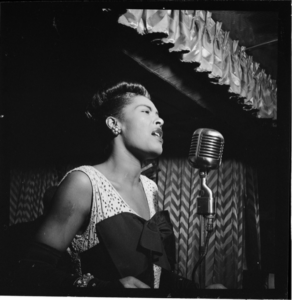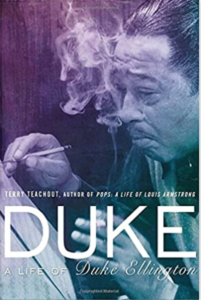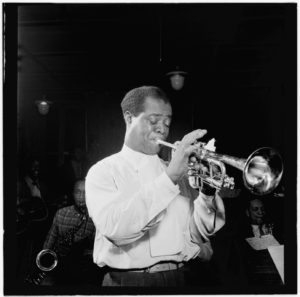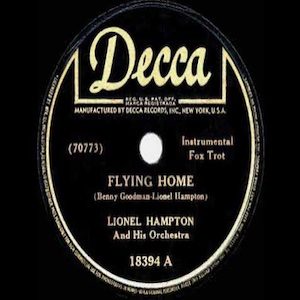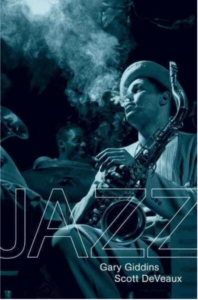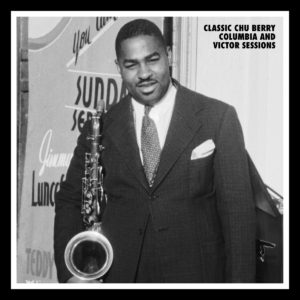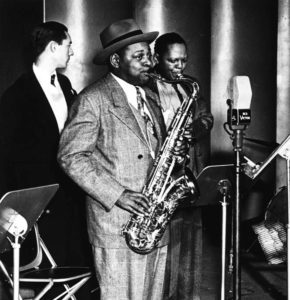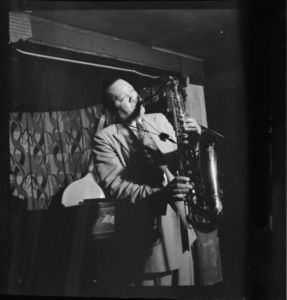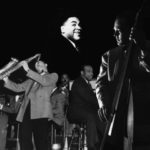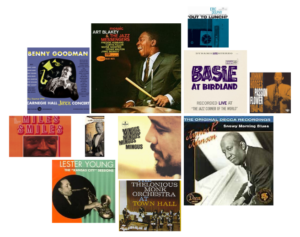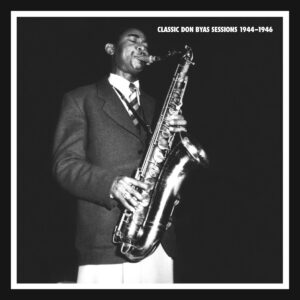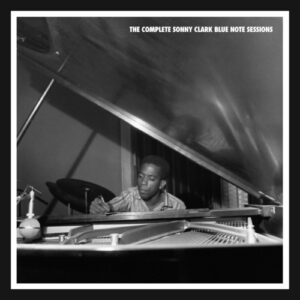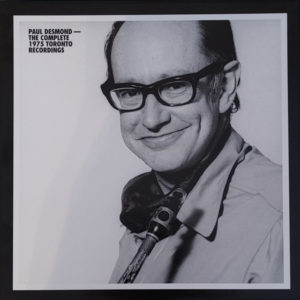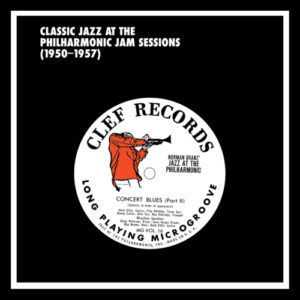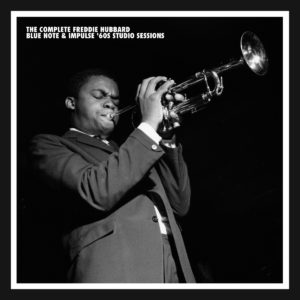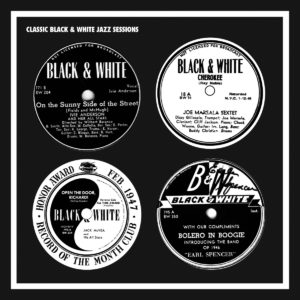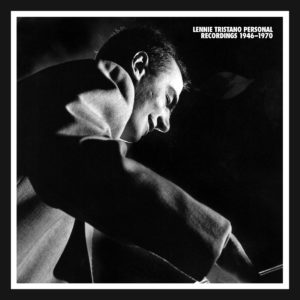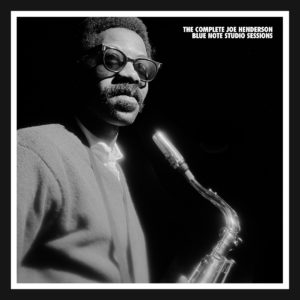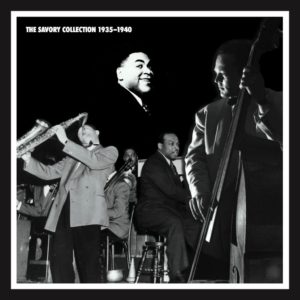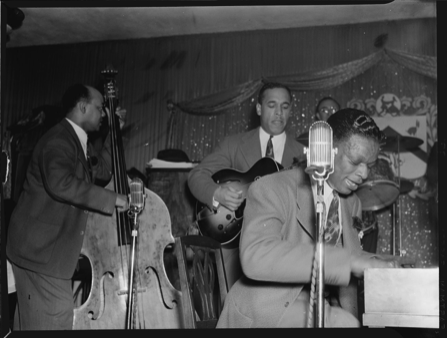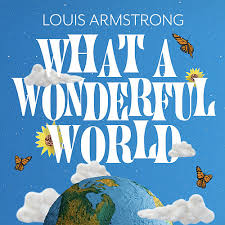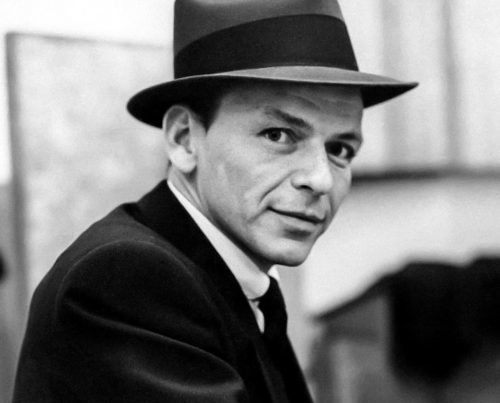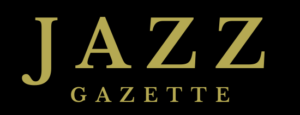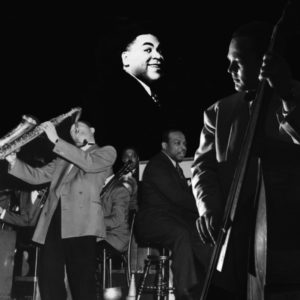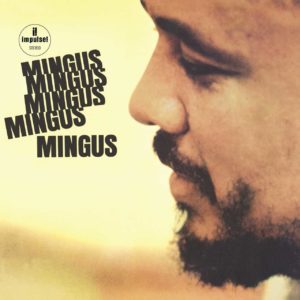
Best Jazz Albums:
1960’s Modern Jazz
Page 2/2
JACKIE MCLEAN
LET FREEDOM RING
With this pivotal 1962 quartet date with Walter Davis, Herbie Lewis and Billy Higgins, Jackie McLean took a bold step pushing the boundaries of hard bop to freer approaches to improvisation. The resulting masterpiece contains some of the most passionate playing of his long career, especially on Bud Powell’s “I’ll Keep Loving You”.
JACKIE MCLEAN
DESTINATION OUT
This music retains the bite and edgy energy it had when it was first recorded forty years ago. Grachan Moncur’s open-ended but rooted compositions give the band plenty of room to maneuver. He, McLean and Bobby Hutcherson solo brilliantly, urged on by the polyrhythmic swing of Roy Haynes and solid foundation provided by Larry Ridley.
CHARLES MINGUS
MINGUS,MINGUS,MINGUS,MINGUS,MINGUS
Great Mingus compositions reworked for this exciting, beautifully voiced 1963 big band with Booker Ervin, Eric Dolphy and Charlie Mariano among the soloists. One of Mingus’s best.
CHARLES MINGUS
BLACK SAINT & THE SINNER LADY
The volcanic, multi-sectioned work features great solos by Charlie Mariano, Jerome Richardson, Rolf Ericson and Jaki Byard as the small big band moves through a variety of textures, harmonies and rhythms, all powerfully propelled by Dannie Richmond’s drums and Mingus’ bass. One of his masterworks.
CHARLES MINGUS
TIJUANA MOODS
Mingus considered this volatile, Spanish-tinged album to be one of the best of his career. The excellent front line consists of trombonist Jimmy Knepper, legendary trumpeter Gene Shaw and saxophonist Safi Hadi with Bill Triglia on piano and Dannie Richmond on drums.
CHARLES MINGUS
PRESENTS CHARLES MINGUS
The always cutting-edge music of Charles Mingus hit a brilliant peak in 1960 with this quartet featuring reedman Eric Dolphy, trumpeter Ted Curson and drummer Dannie Richmond. Although done in the studio, the band played the music straight through as if it were a live performance for spontaneity. Four wild, brilliant musical journeys.
HANK MOBLEY
SOUL STATION
Considered by many to be Mobley’s finest modern jazz recording, this warm, swinging 1960 date finds the tenorman in superb form with Wynton Kelly, Paul Chambers and Art Blakey. Mobley’s hot, brilliantly constructed solos have a smooth sound and an easy feel. A true classic.
HANK MOBLEY
NO ROOM FOR SQUARES
One of Mobley’s best, this album features two 1963 all-star quintets: one with Lee Morgan and Andrew Hill, the other with Donald Byrd and Herbie Hancock. Philly Joe Jones is the driving force throughout. In the original LP sequence with two alternate takes.
THELONIOUS MONK
SOLO MONK
This ain’t mood music! Monk dissects and reassembles standards with some of his most daring and pianistic playing on this amazing 1964/65 album.
THELONIOUS MONK
CRISS-CROSS
Monk’s second album for Columbia, one of his finest album in the modern jazz period of the 1960s , was unfortunately the last quartet studio album with the great Frankie Dunlop on drums.
THELONIOUS MONK
STRAIGHT, NO CHASER
Recorded in November 1966 and January 1967 with his then current quartet (Charlie Rouse, Larry Gales and Ben Riley), Monk is in great form pianistically on this fine session. Both takes of Ellington’s “I Didn’t Know About You” and “This Is My Story, This Is My Song” are solo piano performances.
WES MONTGOMERY
SMOKIN’ @ THE 1/2 NOTE
This unique guitarist found the perfect rhythm section in the Wynton Kelly trio with Paul Chambers and Jimmy Cobb. This outstanding 1965 album was actually half live and half studio.
LEE MORGAN
LEEWAY
This album is unique in Lee Morgan’s vast and rich Blue Note discography. With then current employer Art Blakey, bandmate Bobby Timmons on piano, Paul Chambers on bass and Jackie McLean on alto saxophone, the trumpeter abandons time constraints and stretches out on four soulful, hard bop compositions (the first and last of which are by Cal Massey). These hard bop masters are constantly inspired by Blakey’s explosive grooves.
LEE MORGAN
THE PROCRASTINATOR
This 1967 session is one of the Blue Note masterpieces that inexplicably sat in the vaults for 10 years before its first release. The superb compositions by Morgan and Wayne Shorter have depth and range. The album features them along with Bobby Hutcherson, Herbie Hancock, Ron Carter and Billy Higgins.
OLIVER NELSON
BLUES & ABSTRACT TRUTH
This modern jazz 1961 all-star session with Eric Dolphy, Freddie Hubbard, Bill Evans, Paul Chambers and Roy Haynes is simply one of the most beautifully written, played and recorded modern jazz sessions of all time. From the haunting “Stolen Moments” to the soulful “Hoe-down,” every solo is a thoroughly developed composition unto itself.
SONNY ROLLINS
THE BRIDGE
Sonny Rollins re-emerged from a three-year retirement in 1962 with this stunning album. The quartet is completed by Jim Hall on guitar, Bob Cranshaw on bass and Ben Riley on drums.
WAYNE SHORTER
NIGHT DREAMER
Wayne Shorter’s first Blue Note album, recorded April 29, 1964, remains a masterpiece. Lee Morgan, McCoy Tyner, Reggie Workman and Elvin Jones interpret his unique compositions beautifully and they generously add their own creative depth to his creations.
WAYNE SHORTER
SPEAK NO EVIL
Wayne Shorter’s third masterpiece recorded for Blue Note in 1964 with bandmembers Freddie Hubbard, Herbie Hancock, Ron Carter and Elvin Jones. Wayne’s writing and playing are, as always, incandescent and cutting-edge. “Speak No Evil,” “Witch Hunt” and “Infant Eyes” have become jazz standards.
WAYNE SHORTER
ADAM’S APPLE
One of Shorter’s modern jazz masterpieces with Herbie Hancock, Reggie Workman and Joe Chambers. From the snaky, syncopated groove of the title tune to the haunting, moody Shorter classic “Footprints”, the is one of his most varied and perfectly realized albums.
NINA SIMONE
AT THE VILLAGE GATE
Simone’s haunting voice and piano are accompanied by guitar, bass and drums on this celebrated 1962 live recording.
MCCOY TYNER
REAL MCCOY
McCoy Tyner, the great pianist, emerged as a great composer on the amazing session with Joe Henderson, Ron Carter and Coltrane bandmate Elvin Jones. All five distinctive compositions have become jazz standards. A perfect record and an essential one too. In a 2006 JazzTimes career retrospective, McCoy said, “It was the first album I had done as a leader after leaving John’s band. And a lot of what I learned from him transferred to that recording. So I was sort of inspired when I wrote tunes like “Search For Peace” and “Passion Dance” and “Blues On The Corner.”
TONY WILLIAMS
SPRING
Tony Williams was truly a phenomenon. When he made this album, he was 19 and had already put in more than two years with Miles Davis, participated in a dozen classic Blue Note modern jazz recordings, cut his first album as a leader and revolutionized the way drums were played. This album features tenormen Wayne Shorter. and Sam Rivers, pianist Herbie Hancock, bassist Gary Peacock and Williams in a variety of combinations. The core of this music empathy – listening to each other and maintaining the highest level of creativity. It is the last album Williams would make before forming his fusion group Lifetime.
LARRY YOUNG
UNITY
The album that put Larry Young and Woody Shaw on the jazz map, this exciting and inventive session with Joe Henderson and Elvin Jones. Churning rhythms, challenging ground breaking compositions and brilliant solo work make this album a classic that exerted great, uncredited influence on the next generation of jazz artists. And one of the most requested Blue Note reissues!

